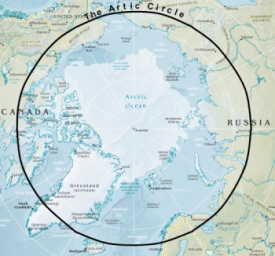The practical question regarding the Sabbath and when it begins and ends is relevant to some believers where the typical start and end of a day do not occur. In the Arctic, for example, the sun can rise or set very early or late, or even not rise or set for an extended period!
The command to obey God every seventh day is straightforward as the Bible states, "Observe the Sabbath and keep it holy. You have six days in which to do your work, but the seventh day is a day of rest dedicated to me" (Exodus 20:8 - 10).
While the fourth commandment gives us a very basic idea of what to do and not do on the Sabbath, no specific instructions are given regarding when to keep the day. The absence of an exact time to keep the Sabbath, within the Ten Commandments, may be indicative of God's wisdom in revealing a law adaptable to various geographical locations.
There are many reasons why sunset is used as the starting point not only for the Sabbath but also for God's Feast days as well. The holy day known as Atonement, occurring in the Fall, states that the day's fasting needed to occur from the evening of the 9th and continue until the 10th day at even (Leviticus 23:27 - 32). Another reason is, in Biblical times, the setting of the sun denoted the end of the work day (Matthew 20:8).

Do the New Testament writers define the end of a day as occurring at a fixed time (e.g. 6 p.m.), or when evening starts, or when the sun sets? The gospel of Mark states that when the sun had set all kinds of sick people and those possessed by an evil spirit came to Jesus to be healed (Mark 1:32). Clearly, the evening in these phrases that mark the end of the day is sunset.
God's rest in the Arctic
Trying to observe the Sabbath using sunset, within the Arctic circle, is virtually impossible. This is because the sun does not set below the visible horizon for a period of time in the summer and does not come above the horizon during parts of winter.
The arctic circle begins at latitude 66° 33' (66 degrees 33 minutes) and includes all regions north of this line. Within this circle the sun is above and below the horizon for 24 straight hours at least once per year. The equivalent polar circle in the Southern Hemisphere is the Antarctic Circle.
The problem of observing the Sabbath is also compounded by the fact that, just before the sun goes below the horizon for a period in winter, it sets at noon. Under such factors the keeping of God's Sabbath day is a real problem since it requires the abrupt stopping of all work before noon on Friday and the starting of a regular day on noon Saturday.
No quick solutions
Although no quick solutions exist on keeping the fourth commandment in such regions as the Arctic, some acceptable alternatives include the following.
When there are no sunsets during winter, the end of twilight, as indicated by astronomical tables, could be looked upon as the start of the Sabbath.
The Sabbath can also be kept by using astronomical computations to determine when the sun is closest to the horizon, or at its zenith on Friday, until it returns to this same location on Saturday.
One can also define, in such regions, the starting and ending of the Sabbath based on when the sun sets just south of the Arctic Circle.
In the area of the Arctic the sun can set very early, very late, or even not at all. It is therefore suggested that the Sabbath be observed from 6 p.m. to 6 p.m., according to the equatorial sunset time. This method preserves the integrity of the sixth working day, is compatible with the sunset time of Bible lands, and respects the working schedule of most people living in these regions.
No instruction exists within the Fourth of the Ten Commandments (the Sabbath day command) in regard to when the day of rest should begin or end. Other Scriptures, however, tell us that at sunset one day ends while another day starts. This period, in most places on the earth, is twenty-four hours long.
In the few places where the time between sunsets in more than twenty-four hours, God has given a certain amount of flexibility so that his Sabbath day can be observed at a time approximating sunset (beginning at 6 p.m. and ending at 6 p.m.).